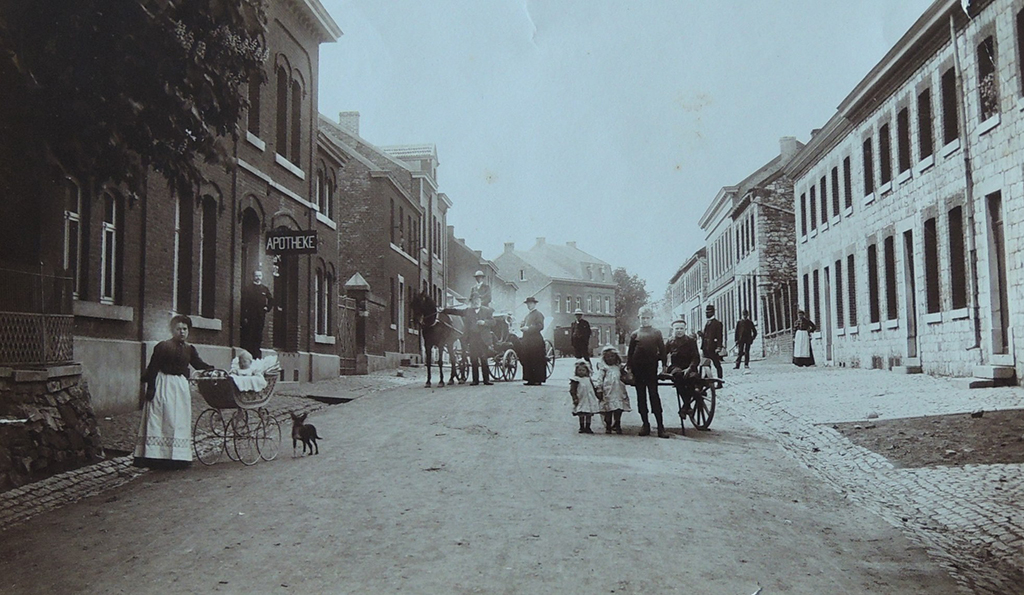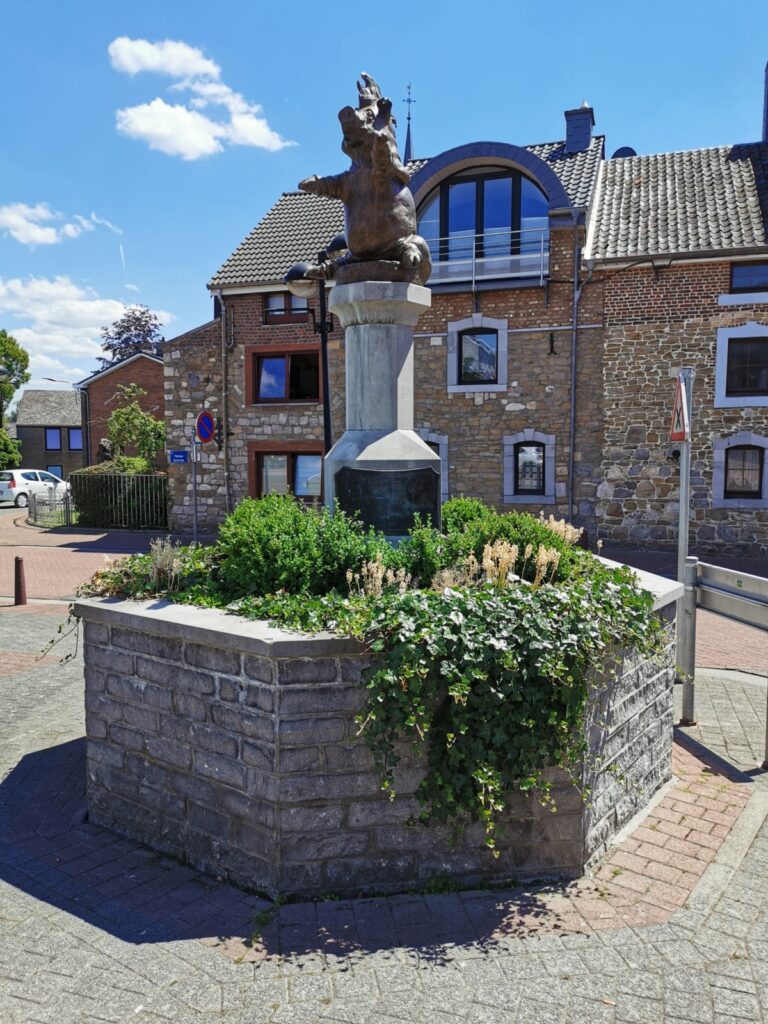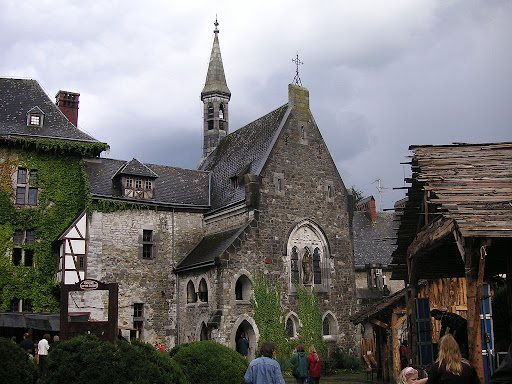Next to where the Belgian, German, and Dutch borders meet, lies a small village whose history is unique: it was a neutral zone and desperately tried to become an independent country, leaving behind a trail of absurd stories.
Walking today through the streets of the small Belgian village of Kelmis (Calamine, in French), in the northeastern corner of Wallonia, you would never believe that this quiet place was at one point the scene of one of the quirkiest, weirdest attempts at creating the smallest independent state in the world.
Here in this typical Walloon town, which lives with the rhythm of carnivals, and which sports a statue of a pig in a jester's costume on its main square, once lay the strange territory of Neutral Moresnet.
It all began with the collapse of Napoleon's Empire. Those who overcame the French Emperor were weary of re-drawing the map of Europe. And these new borderlines posed no problems until they reached the only zinc mine on the whole continent: the one located in the village of Moresnet, today known as Kelmis.
I first visited the place a few years ago and was greeted by then Burgomaster (mayor) Matthias Grosch. In his city hall, he showed me a map of its territory, shaped like a slice of cake.
“The neighbouring countries all wanted our mine,” he said. “So they granted us a temporary status of neutrality in 1816 to win more time to discuss who would get it. And since they could never agree, we belonged to no country for the following century!”
In another part of town, I met Firmin Pauquet, a retired school teacher with a lifelong fascination for the history of the neutral zone. His living room was packed with old documents and maps of the little slice. “It was all about the mine,” he explains. “The Vieille Montagne company that exploited it had virtually every power in the neutral triangle. Although the burgomaster was nominated by neighbouring nations and had a lot of police power, this company ruled the place.”
The little territory was bordered by milestones. Walking in the humid forest amongst mushrooms and oaks, I manage to find a few.
The neutrals had a lot of advantages. “There were no taxes on liquors,” says Mr Grosch. “So my ancestors, like most locals, distilled péket, the genever liquor that we drink in Liège, and sold it for less than across the road.” On maps, I can see that the main road between Liège and Aachen in Germany acts as the southern border of the neutral triangle: on the other side, the German part of the former village was redubbed Neu-Moresnet. A tunnel dug under the road to smuggle duty-free goods from “Neutral” to “Neu” still exists today.

Neutral Moresnet
Contrary to what is often reported, Neutral-Moresnet has never been an independent microstate à la Liechtenstein. But the locals enjoyed their neutral status, which also allowed them to avoid military service. They adopted their own flag, made of horizontal black, white and blue stripes. And after the mine was exhausted, the circumstances of this silly little slice of territory became even crazier when it tried all it could to become the smallest independent nation in the world.
Next to the eastern exit of the town, by the little river, I explored the museum dedicated to Neutral Moresnet, set in a former office of the Vieille Montagne. Memorabilia of the failed attempts at independence are displayed. There are officious coins that bear both Belgian and German symbols. “Although very beautiful,” the manager told me, “these coins were made by private people and had no tenure.”
A postage stamp of Neutral Moresnet has an even more bizarre story. “This stamp was made by the author of a stamp-collectors’ magazine in Brussels, who was upset at a similar French magazine because they plagiarised everything he wrote. So he did a full article on this fake stamp, and called them on it when they blindly copied it!” The stamp bears German and Latin words that translate to “April Fool's Day”.

Kelmis main square
But there were more serious efforts at independence, and they were all thanks to Neutral Moresnet's national hero: Dr Wilhelm Molly. The Vieille Montagne's in-house physicist developed a passion for the place. A polymath, he attempted everything to make this neutral slice more than a mining colony. “This other stamp,” I was told at the museum, “was created by Molly and was used solely inside the neutral zone, which was so small that one wonders why one needed a stamp at all!”
Inspired by Monaco's success, Molly and his associates attempted to establish a casino. The experience turned sour when the Belgian and German police arrived to close it, reportedly after only seventeen days.
The most ambitious and influential of Molly's projects for Neutral Moresnet was to turn it into the world's first Esperanto-speaking nation. “He had been initiated into the esperantist ideal,” explains M. Schymeyer, the head of the local Esperanto group. “So he organised classes to learn the language.”
Esperanto was a worldwide project to spread a made-up international language. Easy to learn – it reportedly takes only three months of study to be fluent in it – Esperanto was supposed to bring peace. “Molly contacted the international esperantist authorities, who were very enthusiastic and planned to organise their next worldwide congress in Neutral Moresnet. They even wrote a national anthem for a free Moresnet state. It was in Esperanto and titled Amikejo, which means ‘Friendship’”. During a fanfare ceremony in Kelmis, I had the opportunity to hear the joyful, upbeat tune.
But time was running short for Neutral Moresnet: it met its end with World War One. After 1918, Belgium was allowed to annex it, along with a few German villages. Today, they all form the German-speaking part of Belgium, and the neutral slice was renamed Kelmis (a local word for zinc), erasing the last trace of neutrality.
What remains of Neutral Moresnet in Kelmis today? The town still uses the same colours as its flag, albeit vertically. And there are still Esperanto classes organised regularly in local schools.
“There were plenty of immigrants here,” says M. Schymeyer. “Poles, Italians, working in the mines. Everyone spoke regular German, and the local dialect, and some French, some Polish, some Italian.... Adding Esperanto was natural.”
The neutral zone never became an independent state after all, but through its silly tale, ended up as further proof that languages are accessible to all.


